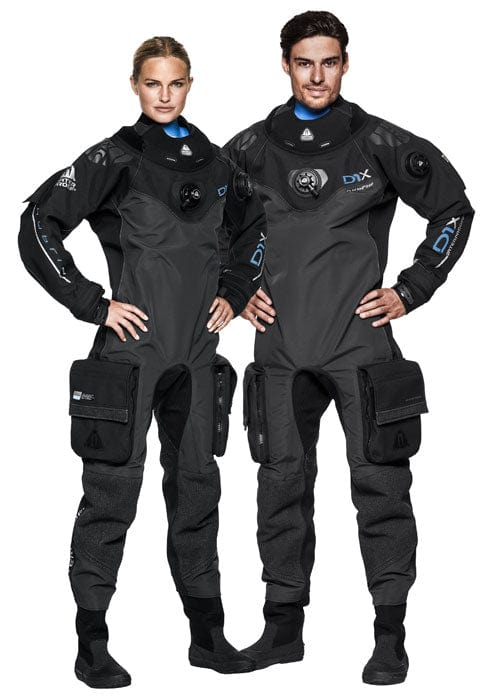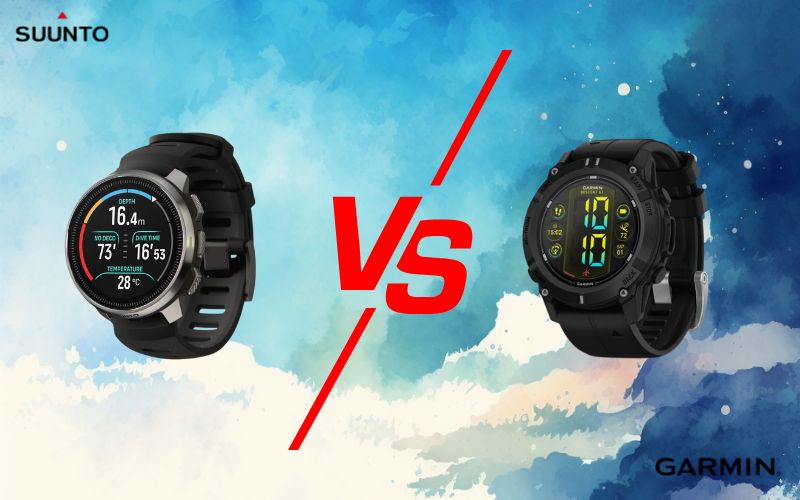Choosing the Best Drysuit For You

Drysuits are an essential piece of gear for scuba divers who venture into cold or challenging waters. They provide thermal protection and keep you completely dry, allowing for more comfortable and extended dives. When choosing a drysuit, one of the key decisions is whether to opt for a trilaminate or neoprene drysuit. Additionally, understanding the types of seals available can help you find the perfect suit for your needs. Let’s dive into the benefits and considerations of each type of drysuit and seal.
Contents
- Trilaminate Drysuits
- Neoprene Drysuits
- Seal Types: Latex, Silicone, and Neoprene
- Which Drysuit and Seals Are Best for You?
- Conclusion
_____________________________________________________________________________________
Trilaminate Drysuits

Benefits:
- Lightweight and Flexible: Trilaminate drysuits are made from three layers of fabric, which makes them lightweight and easy to move in. This flexibility is ideal for technical divers or those who need maximum mobility.
- Customizable Insulation: Because trilaminate suits don’t provide inherent thermal insulation, divers can choose undergarments that match the water temperature, offering versatility across various diving conditions.
- Durability: Trilaminate suits are highly durable and resistant to punctures and abrasions, making them a great choice for wreck or cave diving.
- Easy to Dry: These suits dry quickly after dives, which is a bonus for frequent divers or those traveling between dive sites.
Considerations:
- Less Thermal Protection: Unlike neoprene, trilaminate materials don’t insulate, so the right undergarment is essential.
- Higher Cost: Trilaminate suits tend to be more expensive upfront, although their durability can offset this over time.
- Fit: They can feel baggier compared to neoprene, which may take some getting used to.
_____________________________________________________________________________________
Neoprene Drysuits

Benefits:
- Inherent Insulation: Made from compressed or crushed neoprene, these suits provide better thermal protection, even without additional undergarments.
- Streamlined Fit: Neoprene conforms closely to the body, reducing drag and providing a snug fit that some divers prefer.
- Cost-Effective: Neoprene drysuits are often more affordable than trilaminate options, making them a popular choice for recreational divers.
- Durability in Wear: The material’s stretchiness allows it to endure general wear and tear well.
Considerations:
- Heavier: Neoprene drysuits are bulkier and heavier, which can make them less convenient for travel.
- Longer Drying Time: Neoprene takes longer to dry after a dive, which might be inconvenient for multi-day dive trips.
- Limited Temperature Flexibility: While they offer insulation, adjusting for extreme temperatures may require thick or thin undergarments, limiting versatility.
_____________________________________________________________________________________
Seal Types: Latex, Silicone, and Neoprene

Drysuit seals—at the wrists and neck—are critical for keeping water out and maintaining a secure fit. Each material has its own benefits and considerations:
1. Latex Seals
- Benefits: Extremely watertight and flexible. Lightweight, making them ideal for travel. Easy to replace in case of damage.
- Considerations: Can be prone to tearing if not handled carefully. May cause allergies in some divers. Less durable over time compared to other options.
2. Silicone Seals
- Benefits: Soft and hypoallergenic, making them ideal for sensitive skin. Highly flexible and comfortable to wear. Easy to replace with modular systems.
- Considerations: Less resistant to tearing than latex. Slightly less watertight under extreme strain.
3. Neoprene Seals
- Benefits: Thick and durable, ideal for cold water diving. Provides additional insulation. Less likely to tear compared to latex or silicone.
- Considerations: It is bulkier and less flexible, which might reduce comfort. It is also harder to replace and may require professional assistance. In some cases, it is less watertight than latex or silicone.
_____________________________________________________________________________________
Which Drysuit and Seals Are Best for You?

The right drysuit and seals depend on your diving needs and preferences. Consider these questions:
- What kind of diving do you do? If you dive in varied conditions, a trilaminate suit with customizable undergarments might be best. For consistent cold-water dives, a neoprene suit may offer the insulation you need.
- How often do you dive? If you’re a frequent diver, a trilaminate suit's quick-drying nature can save you time and hassle.
- Do you have skin sensitivities? Silicone seals are ideal for divers with allergies or sensitive skin.
- What’s your budget? While trilaminate suits and silicone seals may cost more initially, their longevity and performance might provide better long-term value.
_____________________________________________________________________________________
Conclusion
Choosing between a trilaminate and neoprene drysuit and the type of seals is a matter of personal preference and diving conditions. Trilaminate suits offer flexibility and versatility, while neoprene suits excel in insulation and cost-effectiveness. Meanwhile, your choice of seals can impact comfort, durability, and performance. By understanding the benefits and trade-offs, you can make an informed decision and invest in a drysuit that enhances your diving adventures.
Ready to take the plunge? Explore our collection of premium trilaminate and neoprene drysuits and accessories to find the perfect fit for your underwater explorations!






